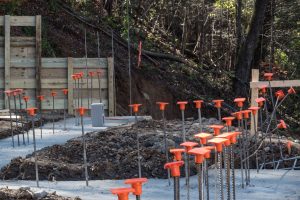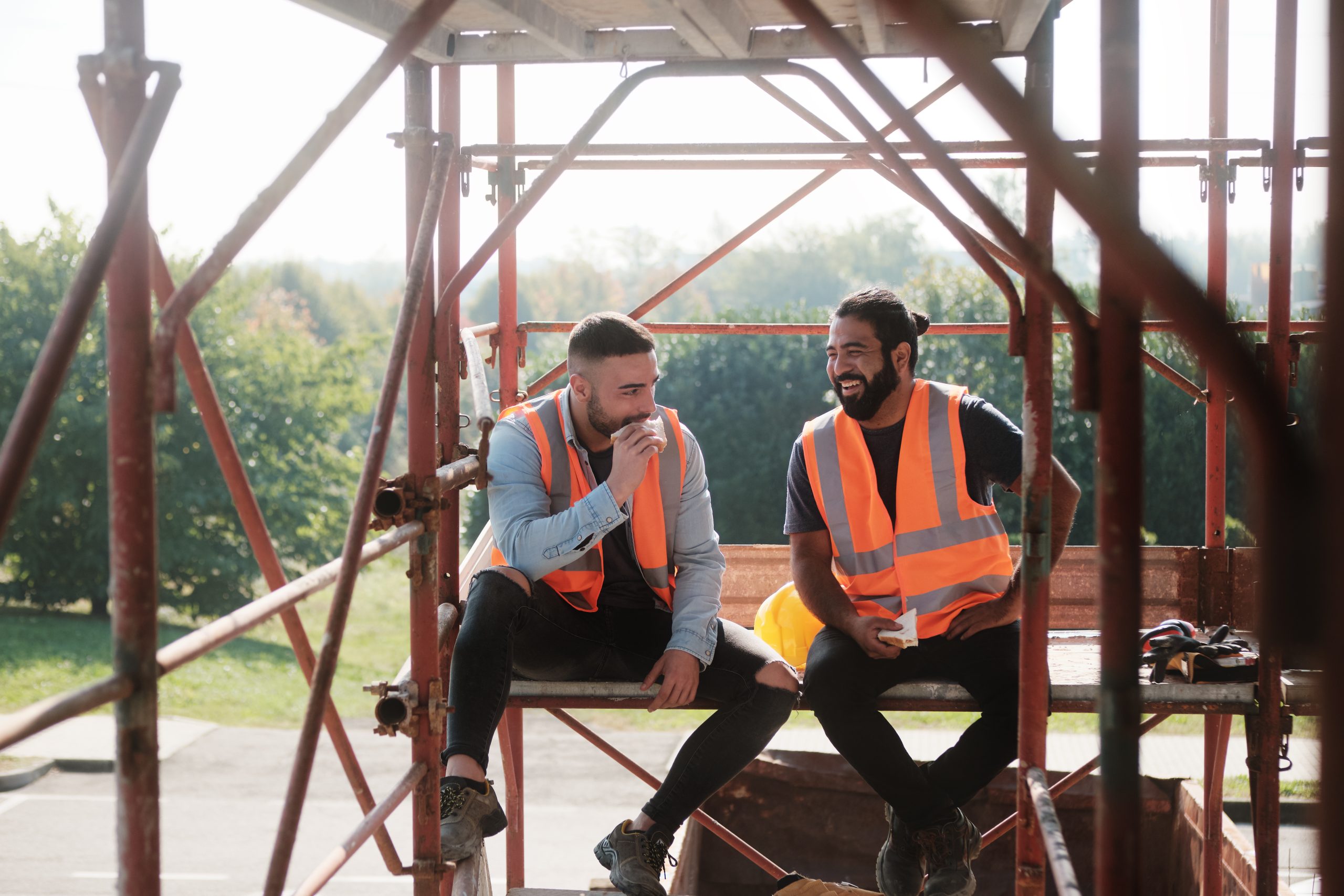
A Health and safety policy outlines your commitment as a business to providing a safe and healthy workplace and preventing work-related injury and illness. It generally outlines, how the business will effectively manage health and safety. Some businesses will choose to have additional supporting policies on specific areas of health and safety such as mental health, injury management and alcohol and other drugs.
Health and safety procedures are how you will effectively manage health and safety.
Typically there are two types of procedures:
Regardless of what procedures you intend to have for your business, ensure you develop procedures in consultation with your workers.
Employers under Legislation have a primary duty of care to ensure that workers are safe from injury and risks to health and this includes:
Having clear policies and procedures in place across the business can play an important role in addressing the above items and is a great way to clearly document how health and safety will be effectively managed.
Businesses are often asked to provide their company-level Policy and Procedure (P&P) document (or manual) to clients or other Employers to demonstrate how they effectively manage health and safety. For example, a Principal Contractor (such as a building company) might ask a plumbing business to provide a copy of their P&P document before they begin working with them. Being able to showcase your commitment and standard of health and safety can help you to stand out against the competition.
To create a comprehensive policy and procedures document, you’ll need expertise in health and safety, including a deep understanding of relevant legislation and best practice. Seeking assistance from a qualified health and safety advisor is the best option.
Luckily, if you’re a HazardCo member, we’ve already created a combined company level policy and procedures document for you. It’s written by our team of health and safety experts, especially for Australian tradies and builders operating in the residential construction industry. If you’re already a member, you can download your company level policy and procedures document from the HazardCo Hub.
We recommend that you read through the P&P document (make sure it all makes sense – give us a bell if it doesn’t).
The next step is to communicate and consult! Get your team together and have a toolbox meeting to discuss the health and safety policies and procedures, and talk to your team about what changes may be needed within your business. This will assist with making sure that everyone is managing health and safety well.
It’s important workers receive adequate information, instruction and training to do their job safely and this extends to procedures so workers understand what procedures are in place and when and how to follow them.
Remember it’s important to regularly monitor and review your health and safety practices across the whole business including out on-site. This will help you to maintain a safe and healthy work environment for all and continually look for areas of improvement.
We’re excited to announce we have partnered with Reece to help more plumbers and tradies to get on top of health and safety.
Reece is Australia’s largest plumbing and bathroom supply business. As part of their dedication to their customers’ success, they offer Trade Business Services that cover everything from job management to financial services. And now, they are adding health and safety to their offerings. Reece are passionate about simplifying health and safety and helping their customers make the switch to digital systems that will take their business to the next level.
With this partnership now in place, HazardCo members can easily charge their membership to their Reece account, making it hassle-free to join.
Our focus is on simplifying health and safety and keeping the person at the top of the ladder safe. As well as offering a digital system that makes it easy to complete WHS reports, such as SWMS, using your phone, we also offer HazardCo members a dedicated 1800 number to receive health and safety advice or incident support, ensuring you can feel confident you’re on top of health and safety.
Learn more about HazardCo and Reece working together.
Reinforcing steel can be used in many ways on a building site. Terms commonly used are rebars and mesh. They are steel bars or mesh wires used to strengthen walls, concrete, or other stone structures.
Workers can fall on the protruding bars which can result in deep lacerations or even life-threatening injuries, so it’s important that preventive measures are in place to reduce the risks.
Some of the hazards include;
Safety Caps
Safety caps are made of plastic so they are a cost-effective way of covering the protruding steel rods. Even though they are small, the safety caps effectively protect against injuries and potential impalement.

Their bright fluorescent colour increases visibility which lessens the chance of the worker walking into, or tripping over them by accident. They are also quick and easy to install.
Control access
In addition to using safety caps, access should be restricted to areas where there are protruding ends.
Injuries can happen when workers are not paying attention to the hazards around them, so ensure that your workers are aware of their surroundings, or physically prevent them from entering the area altogether by using barricades or tape to control access to those areas with hazards.
Keep a clean and tidy site
Ensure that you have a clean and tidy worksite. Gather and remove debris to keep the site free from scraps, and potential trip hazards.
Reinforcing steel scraps lying unattended can rust and pose a safety risk for workers, therefore, make sure you arrange prompt and proper disposal of the scrap materials.
PPE
PPE for people working with reinforcing steel may include;
Best Practices
Construction can be dangerous. There are hazards in all worksites, which can result in life-threatening injuries. Carry out regular site reviews using the HazardCo App to ensure that hazards presented by reinforcing steel are correctly controlled.
Of course, reach out to HazardCo and speak to one of our Health and Safety experts if you have any questions or need more support on avoiding reinforcing steel hazards.
Everyone should make an effort to stay healthy… not just people working in construction. However, there is often a need for specific health checks to monitor the impacts on our health while working on construction sites.
Health monitoring is a proactive way of ensuring your team isn’t at risk in the workplace. It’s focused on the most common health risks on construction sites – hearing loss and exposure to dust (e.g. silica or asbestos dust). Health monitoring does not include general wellbeing checks or programs, since things like cholesterol checks and healthy living programs aren’t specific to construction work.
As an Employer, health monitoring is something you need to provide for any of your team who may be exposed to hazards that may cause long-term health-related issues (e.g. silicosis, asbestosis, mesothelioma, noise-induced hearing loss). It’s intended to detect the early signs of ill health or disease, helping you monitor and protect your team from exposure to construction-related health risks. You’ll need a registered medical practitioner with experience in health monitoring to perform the medical tests.
Monitoring the health of your workers is not an alternative to effective hazard control measures, rather, it helps you understand the effectiveness of the controls being used on-site. If a worker’s health is being affected by exposure to construction-related health risks it’s best to find out as early as possible and prevent any further harm to that worker or any other team members.
You have a legal responsibility to monitor workers’ health. Make sure you complete regular Site Reviews on the HazardCo App, as this will help you identify hazards and put an effective health monitoring plan in place.
Remember, like all on-site health and safety, prevention is where it’s at. To ensure you’re meeting your legal requirements when it comes to health monitoring, get on-site with the HazardCo App, and complete an Site Review today.
We don’t need to tell you that asbestos is a big deal. The dangers of the substance are common knowledge. And knowledge is power, in this case, more so than most: the power to save lives.
With this in mind, we’d like to give you some basic information on the dangers of asbestos, where it can be found and what you can do to avoid it.
There are two types of asbestos:
Inhaling asbestos fibres can cause a range of irreversible damage and diseases. Damage may occur in as little as five years or as long as 40-50 years later. Many people will not realise they have been exposed until it’s too late.
Approximately one third of all homes in Australia contain asbestos products. On 31st December 2003 asbestos was banned in Australia. Therefore any building constructed up until then has a high probability of containing asbestos. Remember, if you’re planning to renovate or partially demolish a building, have a survey done first to identify if asbestos containing material is present. If it is, contact your local Licensed asbestos removalist.
Yes – as long as strict guidelines are followed. Bagging and wrapping asbestos pieces is essential in any sort of removal – and dumping asbestos-containing materials can only be done on authorised sites. We advise you to leave this to the Licensed asbestos removalists.
Recognition means everything when it comes to asbestos. From sticking up posters on-site to equipping your team with knowledge of asbestos dangers through the HazardCo app, educating your workers could be the difference between life and death.
There are many asbestos awareness and training courses available online and face to face for further education and training.
Got Questions? Reach out to the HazardCo Health and Safety Advisory Support Team on 1800 954 702 to talk it over.
WorkSafe Vic
WorkSafe QLD
SafeWork NSW
SafeWork SA
WorkSafe TAS
WorkSafe NT
Worksafe ACT
WorkSafe WA
Australia is known for its rich cultural diversity, which means we have an array of different cultures and languages across the workforce. A culturally and linguistically diverse (CALD) workplace is one where some workers’ preferred language is not English and so they may have limited knowledge of English.
This includes:
It’s important for employers to be aware of the language preferences of their workforce so they can make sure that health and safety is discussed in ways that everyone understands.
Employers have a duty of care to provide and maintain a healthy and safe working environment. As part of this, employers are to provide workers with the necessary information, instruction, training or supervision to enable them to do their work in a way that is safe and without risks to health. Therefore it’s important you provide all workers with the information they need to do their job safely, including information in other languages where appropriate. This means that you need to be aware of any language and cultural barriers that may impact communication in your business, and take reasonable steps to address them.
Starting out with proper consideration and consultation can save you time and money by helping to identify the range of languages spoken in the workplace as well as workers’ preferred forms of communication.
We have put together some tips when it comes to effectively communicating with workers.
When you engage workers, whether they be employees or contractors, make sure you are aware of their language needs.
Key things to consider:
Think about what is the most important information you need to get across. If someone only understood a small amount of what you are trying to say, what are the key things?
It’s best to use face-to-face discussion and demonstration where possible, as this is the most effective way to communicate across different languages and allows any misunderstandings to be identified and addressed immediately. Written material should be used to back up more direct communication, and should be in clear and simple language, with diagrams and examples to aid understanding.
Tailoring communication to the language needs and abilities of workers, and ensuring all workers understand the hazards and risks in their workplace, are important steps toward protecting their health and safety and keeping the workplace a healthy and safe work environment for all.
The more often you see a risk, the less serious it feels in your head. But the danger hasn’t gone away. Think back to your first time on a busy worksite, it probably felt overwhelming with so much happening around you. That same level of danger is still there. The problem is, after being around it for a while, your brain starts to ignore it and switches into “autopilot.” That’s when incidents happen. You have to make a conscious effort to stay alert because worksites are always changing.
Hit body on object
Manual handling
Nail gun
Hand Tools
Slip/trips
Of course, reach out to HazardCo and speak to one of our expert Health and Safety Advisors if you have any questions or need more support on ways to combat common incidents on-site. You can contact us on 1800 954 702.
The construction industry is known for its potential hazards and risks, and unfortunately, incidents sometimes occur. Having an incident on-site can be alarming, but your response is crucial in reducing its impact and making sure the team is safer in the future.
Remember, if you’re a HazardCo member we will support you throughout this process, just give us a call.
Incidents can range from very minor, to serious incidents. The steps below can be scaled up or down depending on the seriousness of the incident. If you have a near miss on site, this is also considered an incident. Learn more about reporting near misses.
The health and safety of the people involved in the incident should be the main concern. Immediately assess the situation to identify any ongoing dangers and take appropriate action to eliminate or minimise risks. Evacuate affected areas if necessary and provide medical assistance to injured personnel. Remember, health and safety should always come before anything else.
Once the immediate safety concerns are addressed, you may need to secure the scene to prevent further incidents or unauthorised access. Erect physical barriers, post warning signs and restrict entry if needed.
Maintaining clear and effective communication during and after an incident is really important.
Notify all the relevant people about the incident as soon as possible. This includes workers, supervisors, managers and contractors.
Using the Report Incident feature on your HazardCo App, fill out the fields to capture what happened. Your reported incident will be added to your incident register in the Hub, and HazardCo retains this for as long as you’re a member.
It’s important to note that some incidents are required to be notified to your Regulator. These are referred to as notifiable incidents. A notifiable incident is:
In the event of a notifiable incident, you need to preserve the incident site until an inspector arrives or directs you otherwise. This doesn’t prevent you from helping an injured person or making the site safe.
For more information on the Regulator in your state, head over to our help centre.
Investigating the incident will help to find out exactly what happened and why. We recommend talking to the people involved as well as any witnesses. For a serious incident, it’s best to speak to everyone individually.
Document all your findings in a report, including photos and relevant data. In the report, you should look at immediate causes as well as bigger issues and potential improvements to prevent future incidents. HazardCo members can use the guided Investigation Report in the Hub to identify any shortcomings or gaps that may have contributed to the incident and implement corrective actions. This may involve improving training programs, modifying procedures, upgrading equipment, or implementing new safety technologies.
Pass on what you have learnt to everyone involved. This is your opportunity to emphasise a culture of continuous improvement and learning to prevent similar incidents in the future.
Encourage open communication and create a supportive environment that encourages workers to report near misses and potential hazards without fear of repercussions.
When an incident occurs on a construction site, a swift and effective response is crucial to reduce risks and ensure the health and safety of your crew. Prioritising safety, establishing clear communication channels, securing the scene, communicating and investigating the incident can continuously improve the health and safety of everyone on site. At the end of the day, these measures protect lives, as well as contribute to the long-term success of the project and your business.
If an incident happens at work and your first thought is paperwork, you’re doing health and safety wrong.
Reporting incidents and near misses is vital to good business, and that begins with a ‘safety differently’ approach. A prevention before cure attitude. One that sees incidents reported immediately and investigated thoroughly.
Time and time again we see incidents happen and fingers pointed. What is absolutely vital for your business is a health and safety culture that involves no blame, is open, honest and educated. How do you nurture this culture? You need the right tools.
You don’t need to over complicate matters here. Incidents and near misses should be registered in one convenient place that is easy to manage and draw upon when needed.
The HazardCo App has been designed with just this in mind. Simply login, report who was involved in the incident, what treatment was required, and the details surrounding what happened.
All of this information is then stored automatically as an incident register on the HazardCo Hub for you to access and view anytime.
You should report all health and safety incidents or near misses that happen at work. These can be incidents that affect you, your workers, or anyone on-site.
Every single worker plays a part in protecting ourselves and one another in the workplace. By reporting incidents you are helping identify areas where you can work together to improve health and safety, and potentially save lives.
It’s important that when incidents occur, time is taken to review and learn from them.
Depending on the complexity of the incident, learning from it might be as simple as meeting with the team afterward to figure out what went wrong, and what can be done to stop it from happening again. Some incidents may need more investigation to help find out exactly what happened and why.
Yes, it is. And that’s why we are so proud of what we do. The HazardCo App and Hub puts health and safety in everyone’s hands, so everyone is protecting their workforce and working safely.
By reporting and investigating an incident, you will find the cause, but you are also likely to identify other areas where improvements can be made. Investigations aren’t about blame and punishment but learning and improving.
No workplace is perfect, and failure will occur. Let your workers know this, and that blame is off the table. This is about making sure everyone is safe and able to get on with the job at hand.
Educate to empower, and enable your workforce to sort their safety today.
All Complete, Premium and Standard HazardCo members receive incident support as part of their plan.
If you have an incident on-site, get in touch and we will help you work out if it’s notifiable to your State/ Territory Regulator and guide you through the next steps. Incidents on-site are stressful for everyone involved, so we will make sure you are following the right processes.
We’re here to help. Reach out to our team if you have any questions or need health and safety advice.
Nail guns are used frequently on construction jobs, including in residential construction. Like all power tools, nail guns can cause serious injury. Nail gun injuries can happen due to accidental discharges whilst moving, carrying, and repositioning. Injury can also happen when fired nails strike other nails or timber knots causing them to ricochet. Incidents also occur when workers accidentally place themselves into positions where they are directly exposed to the projectile path of a nail gun.
The risk of a nail gun injury is greatly increased when using a contact trigger (bump fire or multishot) compared to using a full sequential trigger (single-shot). Most injuries occur when the nail gun is set to ‘bump fire’ mode, resulting in penetrating wounds to the operator or nearby workers.
It’s important you review the type of nail gun trigger system and the extent of information,instruction and training given to workers, particularly inexperienced and young workers.
There are a number of ways to reduce the risk of injuries. We have put together a few suggestions below and we encourage you to consult with your workers about how you can work together to ensure safe nail gun use on-site :
Note: Bump-fire nail guns potentially may be used to reduce the risk of musculoskeletal injuries (e.g. strains and sprains) for jobs that involve high volume production and repetitive tasks. In these circumstances, ensure only highly experienced and skilled workers use these types of nail guns and implement other additional control measures to reduce the risk of injury.











